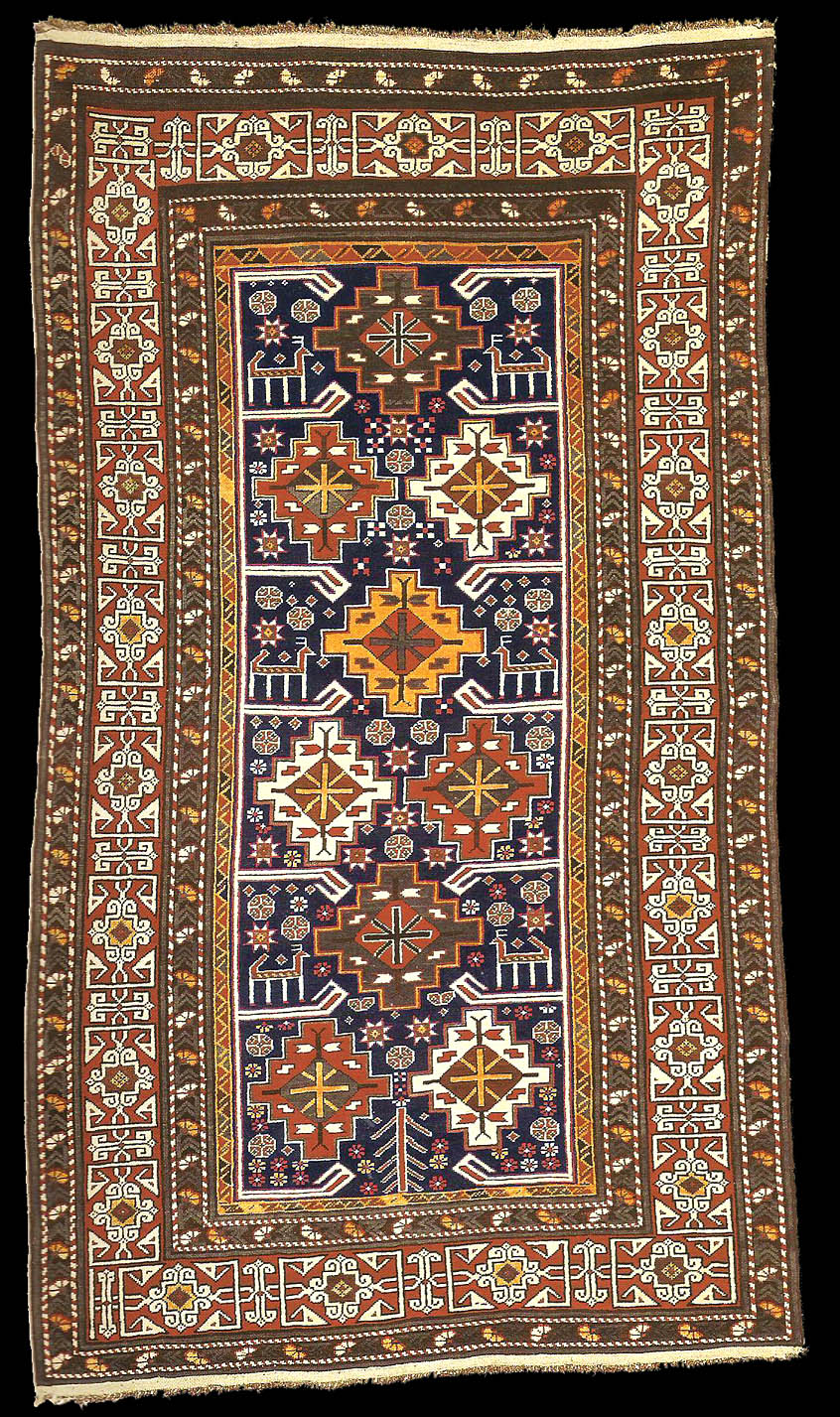|
Antique Kuba rug,
second half 19th century, Konagkend District,
possibly Afurja village, Mountainous Kuba Region, North East
Azerbaijan.
|
|
55 Afurja
Konakhkend district, 220 X 125 cm
Around 1870
The midnight-blue central field comprises fifteen stepped medallions (göls)
with four corners. These are arranged either staggered as single
medallions on a vertical axis or alternating in pairs on a horizontal
axis. Six rows are ornamented. The single medallions are symmetrically
framed by geometrical vines. Above each of the lower vines, rams are woven
in: six animals altogether. The ram was venerated in Azerbaijan, and its
horns have been a symbol of courage since ancient times. Its energetic
leaping and dexterity are legendary, and it has always been the leader of
the flock. Furthermore, it is one of the signs of the zodiac. Stars,
rosettes, lozenges etc. make up the remaining ornamentation. The main
border on a red ground is the shami border which is frequently used. Two
blue-ground minor carnation borders surround the main border. This variety
of stepped medallions is characteristic of the village of Afurja.
Warp: Wool,Z3 S, dark brown mixed, 2 X dark brown + 1 X ivory.
Weft: Wool + Cotton, Z3 (2 X Wool, ivory, 1 X Cotton. white),2 wefts: lst
light, 2nd waved.
Pile: Wool, Z2-4 (also Z3 red, ivory and blue), Pile Height: 5 mm.
Knots: Symmetrical 3, \25◦,H40 x V30 = 1.200 Kn/dm2.
Handle: Velvety, not thin, extremely lightly ribbed.
Upper end: c. 2 cm light cotton +wool simple tapestry weave, warp-threads
knotted in small groups.
Selvedge: Thin, round, light wool shirazi.
Remarks: This is a great carpet of first-class quality wool, colours and
knotting. Literature: L Kerimov II, ill. 153, p. 187; from the collection
of the Museum of Oriental Culture in Moscow; dated 1277 -1860.
published at Siyawouch
Azadi "Azerbaijani Caucasian
rugs" plate no:
55
|

